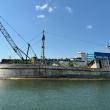Effort builds to save historic legacy of sardine carrier ‘Jacob Pike’
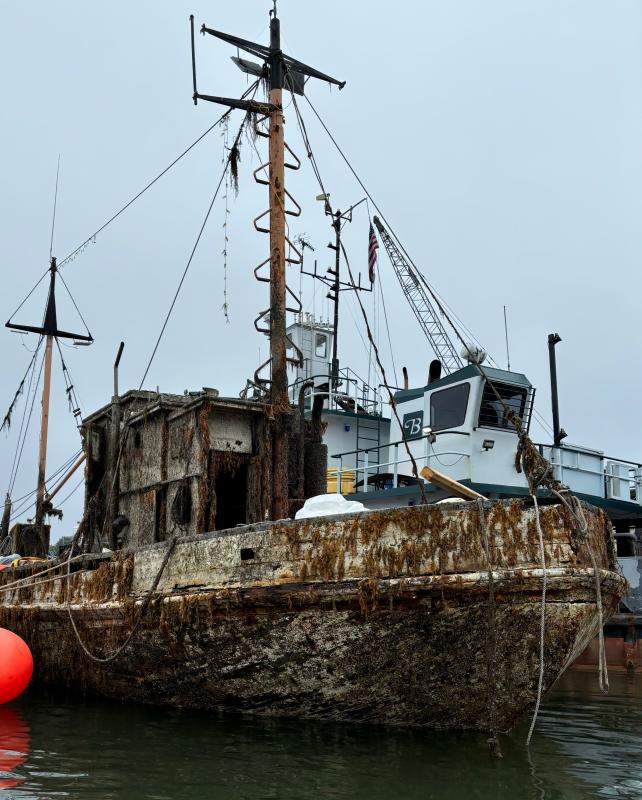 The Jacob Pike at Turners Island in South Portland. (Photo courtesy Sumner Pike Rugh)
The Jacob Pike at Turners Island in South Portland. (Photo courtesy Sumner Pike Rugh) The Jacob Pike in Rockland Harbor, Aug. 8, 2008. (Photo courtesy Sumner Pike Rugh)
The Jacob Pike in Rockland Harbor, Aug. 8, 2008. (Photo courtesy Sumner Pike Rugh) The Jacob Pike in Rockland Harbor, Aug. 8, 2008. (Photo courtesy Sumner Pike Rugh)
The Jacob Pike in Rockland Harbor, Aug. 8, 2008. (Photo courtesy Sumner Pike Rugh) The pilot house of the Jacob Pike, in 2008. (Photo courtesy Sumner Pike Rugh)
The pilot house of the Jacob Pike, in 2008. (Photo courtesy Sumner Pike Rugh) The Jacob Pike at Turners Island in South Portland. (Photo courtesy Sumner Pike Rugh)
The Jacob Pike at Turners Island in South Portland. (Photo courtesy Sumner Pike Rugh) The Jacob Pike at Turners Island in South Portland. (Photo courtesy Sumner Pike Rugh)
The Jacob Pike at Turners Island in South Portland. (Photo courtesy Sumner Pike Rugh)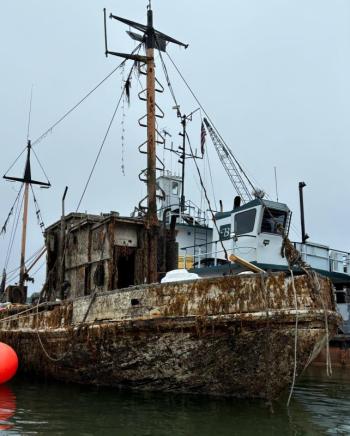 The Jacob Pike at Turners Island in South Portland. (Photo courtesy Sumner Pike Rugh)
The Jacob Pike at Turners Island in South Portland. (Photo courtesy Sumner Pike Rugh) The Jacob Pike in Rockland Harbor, Aug. 8, 2008. (Photo courtesy Sumner Pike Rugh)
The Jacob Pike in Rockland Harbor, Aug. 8, 2008. (Photo courtesy Sumner Pike Rugh)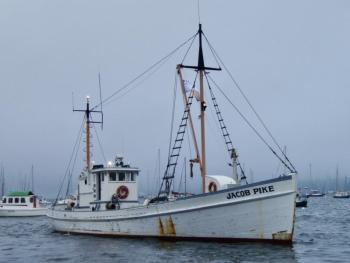 The Jacob Pike in Rockland Harbor, Aug. 8, 2008. (Photo courtesy Sumner Pike Rugh)
The Jacob Pike in Rockland Harbor, Aug. 8, 2008. (Photo courtesy Sumner Pike Rugh) The pilot house of the Jacob Pike, in 2008. (Photo courtesy Sumner Pike Rugh)
The pilot house of the Jacob Pike, in 2008. (Photo courtesy Sumner Pike Rugh)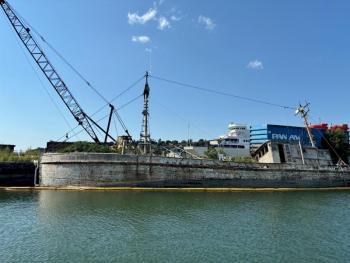 The Jacob Pike at Turners Island in South Portland. (Photo courtesy Sumner Pike Rugh)
The Jacob Pike at Turners Island in South Portland. (Photo courtesy Sumner Pike Rugh) The Jacob Pike at Turners Island in South Portland. (Photo courtesy Sumner Pike Rugh)
The Jacob Pike at Turners Island in South Portland. (Photo courtesy Sumner Pike Rugh)MIDCOAST — At one stretch in Maine’s maritime history, the sardine was as mighty as the lobster, a fishery that employed thousands along the coast. Sardine canneries were a common sight beside busy harbors, and carriers plied the Gulf of Maine, especially in the warmer months. Thomaston was in the thick of the industry, a boatbuilding hub for sturdy fishing vessels that included the Jacob Pike.
“The sardine industry back in the days was a big deal, rivaling what lobsters are today,” said Rockport Marine owner Taylor Allen, who himself spent several years restoring and then relaunching in 2020 the William Underwood, a sardine carrier built in 1941. “A lot of real estate along the coast was bought up by captains back in the day.”
The Jacob Pike, built in 1949 at the Newbert and Wallace yard in Thomaston, was in the thick of it all from launching day. It had been commissioned by Moses B. Pike, the owner of the Holmes Packing Corporation in Lubec. He named the vessel after his father, Captain Jacob Clark Pike, a sea captain and businessman. The Jacob Pike spent a good number of its years in the Midcoast, and at one point in the boat’s working history, it was owned by the Port Clyde Canning Company, transporting the catch back to the Rockland sardine cannery until that closed in 1997.
“The Jacob Pike the last serving example of its type, and is the best example of that,” said Allen.
Today, however, the Jacob Pike rides on the precipice of demise in South Portland.
In early August, the vessel had been hauled up from the bottom of the New Meadows River in Harpswell, a victim of the devastating January 10, 2024 ocean storm that ravaged Maine’s coastline. The U.S. Coast Guard announced that it and Maine’s Department of Environmental Protection would remove the sunken 83-foot Jacob Pike out of concern for oil leakage from the vessel’s 1,000 gallon fuel tank.
“When the owner and responsible party of the Jacob Pike did not take appropriate action to mitigate the significant threat of pollution from the vessel, Coast Guard Sector Northern New England collaborated with Maine DEP, the National Oceanic and Atmospheric Administration, U.S. Fish and Wildlife, Maine Department of Marine Resources, Maine Department of Agriculture Conservation and Forestry, and the Town of Harpswell, to develop a comprehensive plan to safely and permanently remove the threat posed by the Jacob Pike,” the Coast Guard had said, Aug. 5.
That news galvanized Chebeague Island resident Summer Rugh and he stepped forward to steer a new course for the relic. Rugh is the great, great grandson of Capt. Jacob Pike, and is a mariner in his own right. Now a senior at the U.S. Merchant Marine Academy studying marine engineering, Rugh grew up tending lobster traps in Casco Bay. His appreciation of the Jacob Pike has only deepened over the years, and from afar, he would keep track of the vessel named after his ancestor.
Last January, he was working as a cadet off the coast of South Korea when he heard the disheartening news about the Jacob Pike sinking.
In Rockport, Taylor Allen also knows well of the vessel’s history. For a brief time in 2007, he was the boat’s owner and he and the Penobscot Marine Museum, in Searsport, had tried to raise funds for its preservation for educational purposes. There were, however, no financial supporters of the idea.
The Jacob Pike was sold and went back to work, eventually winding up in Boothbay Harbor, where another attempt was made to keep the vessel seaworthy. As recently as 2021, albeit, “in tough shape,” said Rugh, the Jacob Pike was used to fish for Atlantic Menhaden (pogeys) off of North Haven. Then, said Rugh, a Facebook post listed the boat for free and a new owner moored it in the New Meadows River.
Today, the boat is at the Turners Island marine salvage and demolition scrapyard in South Portland. Two weeks ago, it was awaiting the crusher claw, when fate intervened. Just as the boat was ready for demolition at the orders of the Coast Guard, which had towed the Pike down the coast from Harpswell, something halted the game plan.
Rugh is not sure how the demolition of the boat was slowed, but he is grateful for the opportunity to communicate with the Coast Guard about possibilities. He had been strongly advocating on behalf of the historic carrier, appealing to the Coast Guard to wait before scrapping the boat. He contacted news outlets and appealed to Congressional delegates. He called and wrote to the Coast Guard.
“I’m sure they are tired of hearing my name,” he said. “It is difficult but we want to make it work for all parties.”
He has also established a nonprofit, the Jacob Pike Organization, to assist as a legal framework for both reconstruction of the Jacob Pike, and for fundraising. He wants to deconstruct the boat and save parts of it to gift to maritime museums; for example, the wheelhouse alone is an appropriate use for hands-on learning, he said.
“We don’t want to see something integral to history destroyed,” he said, Aug. 24.
And while it is, in a sense, a family heirloom, the Jacob Pike is also emblematic of Maine’s collective fishing heritage.
Rugh understands the Coast Guard is bound by maritime laws concerning vessel ownership, and its own mission of pollution prevention. But Rugh and the Organization have two proposals they are submitting to the Coast Guard this week:
1) Tow the vessel to the Front Street Shipyard in Belfast, which has already said it would help in the effort. There, the boat would be measured and surveyed in detail, and deconstructed with parts of it saved for museum archival purposes. Then, with plans forged from the surveys, a new Jacob Pike would be reconstructed.
2) The Foundation would obtain documentation rights and have Turners Island deconstruct the vessel. The documentation recorded in the deconstruction would be used in a reconstruction of the vessel.
“We want to save the boat but by saving the boat, we have to start over,” said Rugh. “It would be a reconstruction not a replication.”
Wooden boats are the life of Taylor Allen, and he sees opportunity in reconstructing the Jacob Pike, if the Jacob Pike Foundation is allowed the chance for a deeper survey of existing vessel before it is demolished.
Allen met Rugh for the first time just a few weeks ago, but he is convinced that the young merchant mariner can pull off the project.
“In all the years I have been associated with the Jacob Pike, he is the first person who has the most energy for restoring the boat,” said Allen. “He and his family have a long-term interest in the boat. This kid has got as much energy and vision, and frankly, maybe ability, to pull people together to raise the funds.”
Measurements of the hull have been made in the past, he said.
“From that shape we can get construction,” he said. “But there is value in having the boat intact for awhile for fundraising, and we’d get a solid idea how various component of the boat were built.”
There is no sardine carrier left on the coast of Maine that is as, “iconic and noteworthy as the Jacob Pike,” said Allen, who envisions an educational mission for a reconstructed vessel, perhaps for ocean research.
Plus, he said simply: “it’s gorgeous and it is seaworthy. It will have a future use.”
Allen, along with Dana Rice, of Birch Harbor, and another former owner of the Jacob Pike, as well as marine historian and engineer Maynard Bray, all endorse Rugh’s efforts.
“We have joined Sumner in this effort,” said Allen.
Reach Editorial Director Lynda Clancy at lyndaclancy@penbaypilot.com; 207-706-6657











